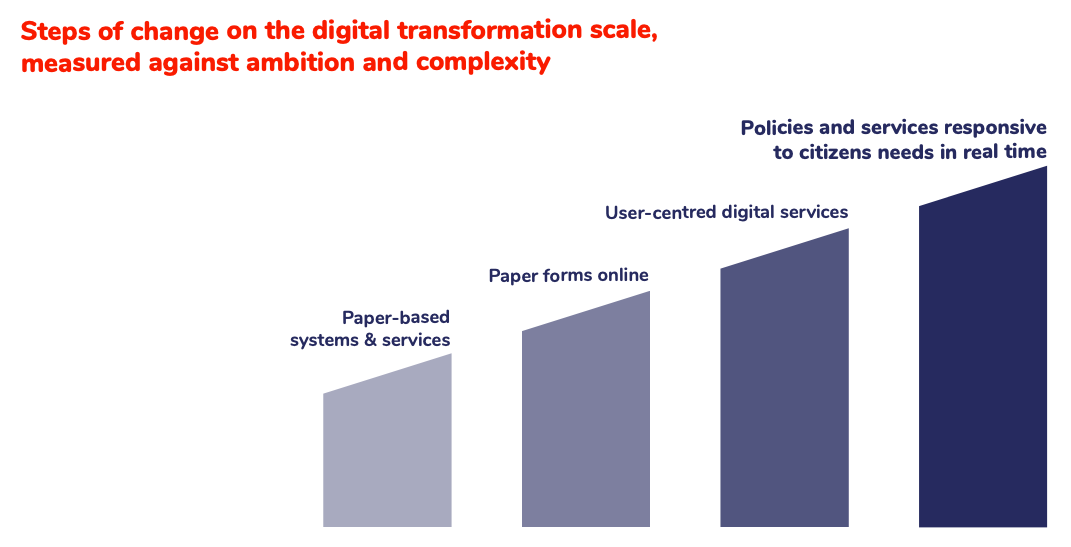Smart cities and digital transformation
In May 2020, we published a Baseline Study for the ASToN network which shared our research into the concept of “smart cities”. While there was variety in their definitions and ambitions, we saw that the local authorities in our network were using this idea of a smart city as a way of engaging in technological solutions to transform urban services. Over the course of the project, we have found it more useful to focus on the concept of ‘digital transformation’ than ‘smart cities’ as it focuses on the unique journey of each city rather than an end state.
The term digital refers to the use of technology (like computer technologies, mobile, artificial intelligence, robotics, blockchain, and Internet of Things). It also has a much broader meaning as “applying the culture, processes, business models and technologies of the internet era to respond to people’s raised expectations”.
As a network, we remain convinced of the positive impact digital tools can have on cities. Throughout the Covid-19 pandemic we saw the power of such tools, from simple video conferencing software helping to connect people in quarantine, to drones delivering medical supplies to hospitals. However, we’re deeply aware that these positives are not automatic. If technology is carelessly deployed, projects are unlikely to have the desired impact and may even have unintended, negative consequences.
The ability of a local authority to mobilise digital in its full range (technology, mindsets, and ways of working) influences their ability to improve public services. The most ambitious versions of digital transformation don’t centre digital and technology at all (see diagram below). Instead they focus on creating services that are user-centred and responsive to citizens’ needs in whatever form that might take. In many cases, the most important thing local authorities can do to harness the potential of digital transformation is to reimagine how they engage stakeholders, citizens, and suppliers throughout the process.



